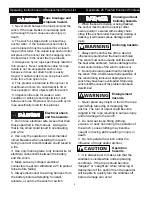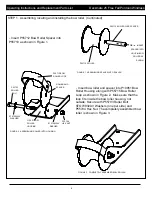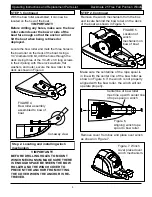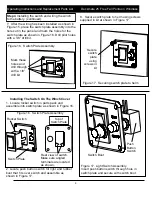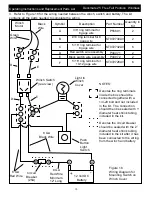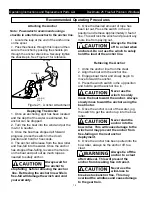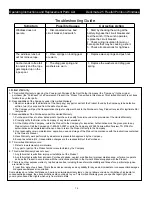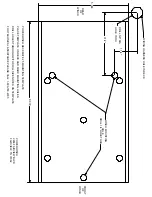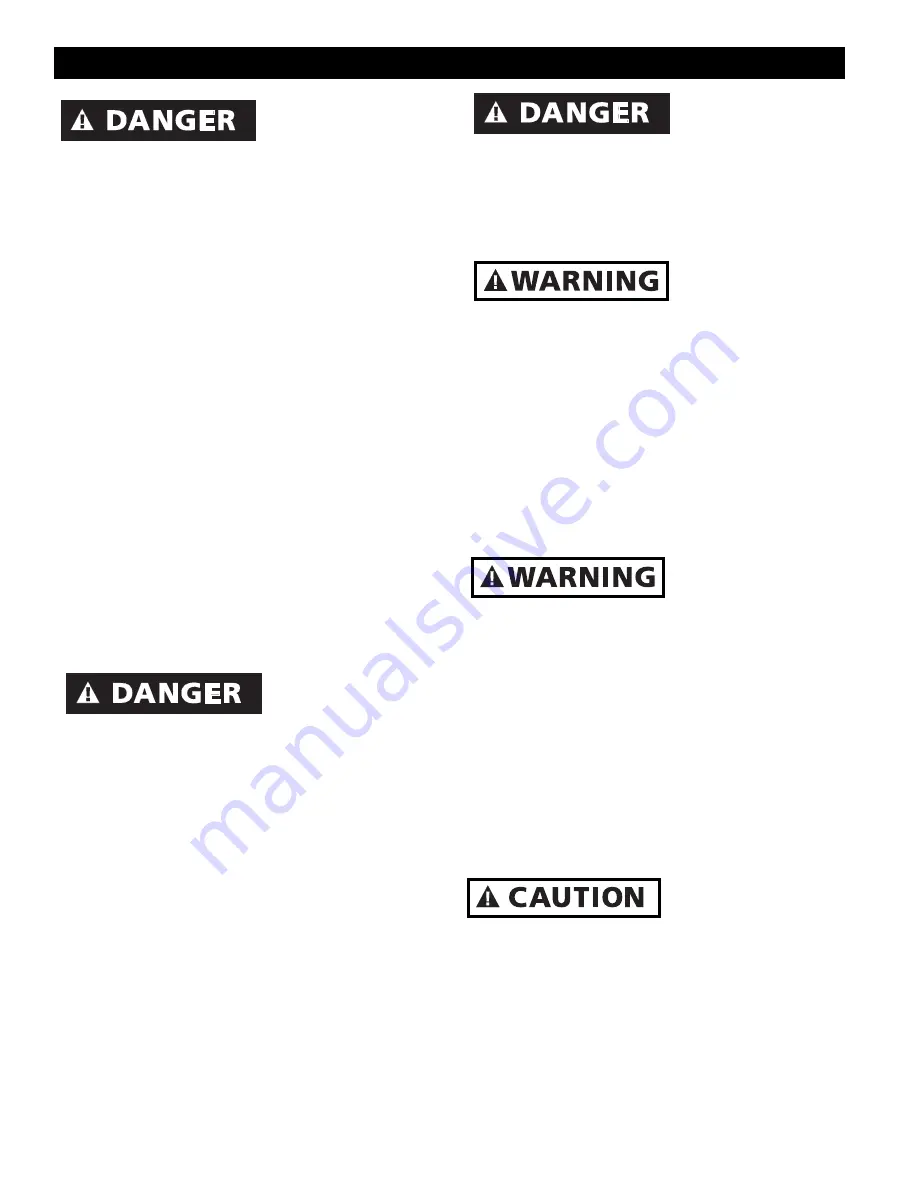
2
Rope breakage and
whiplash hazard.
1.
Never stand between the load point and the
winch. If the rope breaks it could snap back
with enough force to cause severe injury or
death.
2.
The winch is shipped with a closed loop
anchor roller. If the included anchor roller is
ever replaced it must be replaced by a closed
loop anchor roller. The closed loop anchor
roller
will prevent the anchor line from snapping
onto
the boat deck in the event the rope
breaks.
3.
Always use nylon rope specifically rated
for
this product. Never substitute cable for
rope.
Cable is not an acceptable anchor line
because it does not stretch and is easily
frayed. If cable breaks it can snap back with
more force than nylon rope.
4.
This product is intended to lift only river &
mushroom anchors. Do not attempt to lift or
move people or other objects with this winch.
5.
Inspect entire rope for weak or worn
condition or kinking (short tight twist or curl)
before each use. Replace worn rope with
nylon
rope specifically rated for this product.
Electrical shock
and fire hazards.
1. Do not use electrical wire sizes other than
those specified in this manual. Using wire
that is too small could result in overloading
and a fire.
2. Use only the supplied or recommended
circuit breakers when installing this winch.
Using incorrect circuit breakers could result in
a fire.
3. Use only marine grade, fully tinned wire for
electrical connections between the battery
and the winch.
4. Make sure any crimped electrical
connectors meet can withstand a 25 lb pullout
force before failing.
5. Always disconnect the wiring harness from
the battery before attempting to install,
relocate, or service the winch or switch.
Cruising and boat
trailering hazards.
1. When the boat is cruising or being trailered,
the anchor must be tied to a cleat (or other
secure point) or secured with a safety chain/
strap. If the anchor breaks free during cruising or
trailering, it will cause serious damage and/or
injury.
Anchoring hazards.
1.
Always tie the anchor line off to a cleat (or
other secure point) when the boat is anchored.
The winch must not be used to hold the load of
the boat while anchored. Serious damage to the
motor and/or failure of the winch could occur.
2.
Do not pull a load greater than the rating for
the winch. If the circuit breaker halts operation of
the winch during retrieval or deployment, the
winch may have been overloaded. Stop using
winch until the cause of the problem has been
determi
n
ed.
Entanglement
hazards.
1. Never place any object or tool in the rope
spool while retrieving or deploying the
anchor. The tool or object could become
tangled in the rope resulting in serious injury
and/or damage to the winch.
2. Do not wear loose fitting clothing,
scarves, or neck ties during the operation of
the winch. Loose clothing may become
caught in moving parts resulting in injury or
death.
3. Do not operate the winch under the
influence of drugs and/or alcohol.
1. It is always best to make sure that the
windlass is visible while under operating
conditions. If the rope should become
“tangled” or “caught up” while retrieving or
deployment of the anchor then the operator
will be able to quickly turn the windlass off
before damage can occur.
Operating Instructions and Replacement Parts List
Deckmate 25 Freefall Pontoon Windlass
Operation
hazards.


